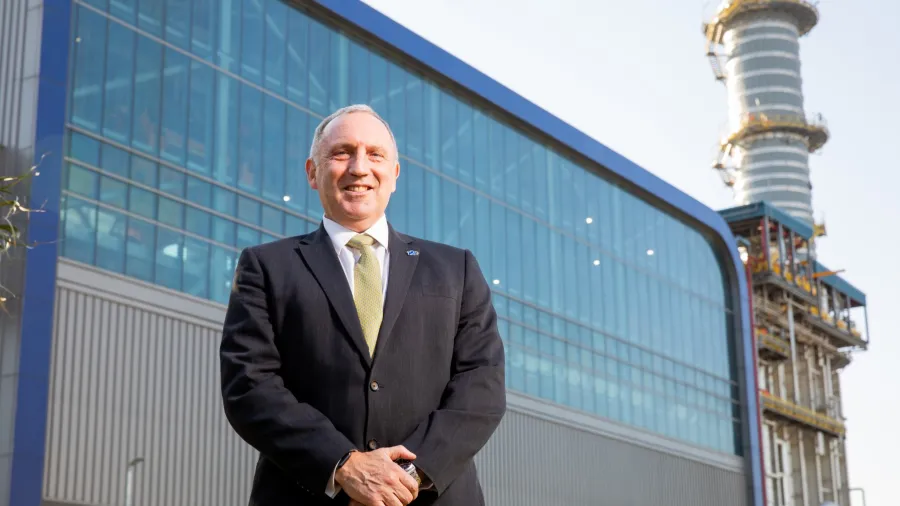
What happens to CLP Power as Hong Kong transitions to carbon neutrality
Since 2020, it has increased its gas-fired power generation proportion to around 50% to make up for the coal-fired generation to be phased out.
With 15% of its generation mix coming from coal in 2020, CLP Power is in the middle of its energy transition journey when the Hong Kong Government declared its intention to be carbon neutral before 2050. It seems that the company already has its strategies in place to align itself with the government’s target.
To replace coal, CLP Power will ramp up its generation from natural gas—which already accounts for 48% of its mix in 2020, CLP Power Chief Operating Officer Paul Tomlinson told Asian Power.
“CLP Power will be in discussion with the government on phasing out coal-fired generation from our Castle Peak B Power Station’s units in the 2030s whilst our older coal-fired generation units at Castle Peak A Power Station will gradually be closed over the next few years,” he added.
Tomlinson also discussed the company’s plans and other sectors it will tap into to align its operations with the Hong Kong Government’s carbon neutrality plan.
How will you accelerate phasing out your coal-based assets?
We will increase the use of natural gas in the interim period, which is supported by our further investment in Black Point Power Station where a new gas-fired generation unit has been commissioned, and another unit is expected to go into operation by the end of 2023.
We have already announced plans to phase out coal for power generation at Castle Peak A Power Station progressively in the next few years. We also aim to phase out coal at Castle Peak B Power Station from the mid-2030s onwards.
At present, CLP Power receives gas from China National Offshore Oil Corporation’s different gas fields in the South China Sea through the Yacheng sub-sea pipeline. We also take supplies through a subsea pipeline connecting to the Second West-East Gas Pipeline under a long-term gas supply agreement with PetroChina.
To access competitive supplies from the global liquified natural gas (LNG) market in long term, CLP Power is developing an offshore LNG terminal in Hong Kong waters, jointly with Hongkong Electric. Considerable progress has been made with the jacket and topside structures installed to form the terminal. The subsea pipelaying works have been completed, and the corresponding jetting and rock dumping works are in progress.
Under this energy transition, CLP Power’s carbon intensity is projected to further decrease steadily in the coming years with the increased use of natural gas, the commissioning of additional gas-fired generation units, and when an offshore LNG terminal and a Floating Storage and Regasification Unit are in place.

Black Point Power Station. Photo from CLP Power.
Tell us about the new gas-fired generation unit at Black Point Power Station. How is this instrumental in Hong Kong's overall clean energy transition?
CLP Power became the first power company in Hong Kong to use natural gas for power generation in 1996 when Black Point Power Station began operations. Since then, we have continued to improve emissions performance by optimising our fuel mix, installing emission-reduction facilities, and enhancing plant efficiency. Remarkably, our emissions have fallen by more than 90% since 1990, whilst electricity demand over the same period has grown by over 80%.
As Hong Kong works towards a target of becoming carbon neutral before 2050, we are increasing our low-carbon electricity supply and helping customers reduce their carbon footprint. Raising the ratio of gas-fired generation is an important near-term measure in CLP Power’s energy transition journey. It also aligns with the CLP Group’s updated Climate Vision 2050, in which CLP commits to achieving net-zero greenhouse gas emissions across its value chain by 2050.
We planned to build two additional gas-fired generation units to meet the demands of continuing social and economic development, whilst reaching the government’s target of increasing gas-fired generation to around half of the city’s total fuel mix.
The first new unit D1 went into service in 2020. It has a generation capacity of 550 megawatts (MW), the largest of all existing gas-fired units in Hong Kong and sufficient to power 900,000 homes. The unit uses Combined Cycle Gas Turbine (CCGT) technology with an advanced design capable of achieving an efficiency rate of around 60%, making it one of the most efficient gas-fired power plants in the world. With Unit D1, we significantly reduced our reliance on coal-fired generation. As a result, the proportion of natural gas in our fuel mix rose to around 50% in 2020, from less than 30% in 2019. Also, the carbon intensity has fallen significantly from 0.95 kilograms (kg) in 1990 to 0.37kg per unit of electricity consumption in 2020.
To continue the phasing out of the coal-fired generation units, we are building a second new gas-fired generation unit, Unit D2, at Black Point Power Station. The second unit is expected to go into operation in 2023 and will further increase the proportion of natural gas in CLP Power’s fuel mix to over 50%.

New gas-fired generation unit D1. Photo from CLP Power.
What sets the D1 unit apart from other gas-fired generation units?
Unit D1 deploys state-of-the-art H-class CCGT technology with a more advanced design and is capable of achieving an efficiency rate of around 60%, making it one of the most efficient gas-fired power plants in the world.
Fuel efficiency and flexibility are central to the design of Unit D1. It is engineered to use a wide range of gas supplies and is also a dual fuel unit with the capacity to switch to emergency backup fuel and with the capability for automatic on-load fuel transfer to ensure a reliable supply of electricity to our customers.
Unit D1 is also equipped with a low nitrogen oxides combustion system and a selective catalytic reduction system that reduces 40% more nitrogen oxides emissions than CLP Power’s other gas-fired generation units.
In addition, Unit D1 attains the Final Platinum rating of the BEAM Plus, which is the green building assessment tool in Hong Kong. The green and sustainable features include access to natural light, energy-efficient electrical fixtures and appliances, an extensive rainwater harvesting system, roof-top solar panels, and vertical greening, supporting energy-saving and promoting sustainability.
How are you going to encourage consumers from the commercial and industrial sectors to shift to cleaner energy?
We will keep abreast of developments in technologies that utilise renewable energy for electricity generation. At the same time, we are working on ways to convert our local gas generation infrastructure to support the use of zero-carbon fuels such as green hydrogen.
CLP Power will be in discussion with the government on phasing out coal-fired generation from our Castle Peak B Power Station’s units in the 2030s whilst our older coal-fired generation units at Castle Peak A Power Station will gradually be closed over the next few years.
We also strive to explore practical local renewable energy opportunities despite limited renewable energy resources and land scarcity in Hong Kong. We launched the Feed-in Tariff (FiT) scheme to encourage our customers to develop distributed renewable energy (RE) systems. The scheme has been well received by the community. Since opening applications in May 2018, we have received over 19,600 applications as of end-March 2022.
Around 91% of the applications have been approved. If all approved applications are installed, the amount of electricity generated is equivalent to meeting the annual electricity consumption of about 64,800 average households. As of end-March, 287MW of capacity had been approved or connected to the grid under the FiT scheme, up from 175MW by end-December 2020.
Also, we have seen a growing interest in sustainable products, such as Renewable Energy Certificates (RECs). As of end-March 2022, over 24.8 GWh units were sold, and our customers are helping to reduce about 9,900 tonnes of carbon dioxide emission. Sales of RECs grew over 170% in 2021 when compared with that of 2020 (2020: 8.6 GWh).
CLP Power also plays an important role to facilitate the decarbonisation of the transportation sector which accounts for 19.7% of Hong Kong’s greenhouse gas emissions in 2020. CLP Power has set up 54 electric vehicle (EV) charging stations in our supply area and the charging service is free for users until the end of this year. We are also working with the government and private sector on developing e-transport trials of buses, public light buses, taxis and ferries. We anticipate that EV technology will develop rapidly, and we will adjust our strategy from time to time.
We will continue to support the government by helping customers manage energy demand and promote energy saving with a host of energy-efficient solutions and support measures including the Eco Building Fund, Electrical Equipment Upgrade Scheme, and training courses under the Retro-Commissioning Charter Programme, as well as innovative technology applications.
To support Hong Kong’s transformation into a smart city, CLP Power is upgrading all its residential and small to medium-sized business customers’ conventional metres to smart metres from late 2018 to 2025, with a total of 2.6 million smart metres. We also engage the wider community for low-carbon living through energy efficiency and conservation public education programmes.
What other sectors will CLP Power tap into to contribute to Hong Kong’s net-zero goals?
We will strive to identify more zero-carbon energy sources such as nuclear energy and RE projects in neighbouring regions to power Hong Kong both locally and through regional cooperation in our holistic approach to a decarbonisation strategy. This includes seeking joint investment and development opportunities for participating in and operating zero-carbon energy projects near Hong Kong.
Green hydrogen has the potential to be a key part of Hong Kong’s decarbonisation plan in the medium to long term. As the cost of producing RE goes down and the demand for hydrogen goes up, there is hope that zero-carbon green hydrogen will become an important contributor to emissions reduction.
CLP has committed to investing in several key gas power infrastructure projects, which are the most effective way to quickly reduce the carbon intensity of Hong Kong’s electricity supply. These gas infrastructures could potentially be repurposed to use 100% hydrogen.
In future, when the hydrogen power generation technology becomes mature, the cost of retrofitting the existing gas-fired generation units (like Unit D1) to run on hydrogen is expected to be much lower than building a new one.
Nuclear energy will also play a key role in Hong Kong. It is highly reliable, virtually carbon-free and is not subject to the volatility of international fuel prices. Daya Bay Nuclear Power Station has been providing a quarter of Hong Kong’s electricity since 1994 and nuclear is a very important and mature zero-carbon technology that we should not ignore.
Importing nuclear energy to Hong Kong has helped avoid carbon dioxide in the city by over 7.5 million tonnes a year whilst ensuring a reliable power supply at a competitive price. Without such nuclear import, the city’s carbon emissions would have increased by about 20% a year. Over the years, Daya Bay has been maintaining its track record of a safe and reliable operation.
As of today, nuclear energy accounts for about a third of CLP’s fuel mix in Hong Kong and has been safely meeting 25% of Hong Kong’s electricity needs for more than 20 years. Daya Bay produces around 15 billion kilowatt-hours of electricity annually. To ensure that cleaner and more cost-competitive energy is provided to Hong Kong, Daya Bay has increased its electricity supply to Hong Kong from 70% to around 80% of its output from late 2014.
To meet the emission caps in 2020 and afterwards, and the long-term environmental policy set out by the government, we need to maintain the current import of nuclear power to keep the proportion of zero-carbon energy in our fuel mix that we already have.
We believe that nuclear power should continue to be a part of our fuel mix in the longer term and we will continue to explore ways of importing it in a manner that is acceptable to the community. It will offer an important element of diversity as we seek to minimise generation costs and emissions.
With the technology and equipment of wind generation getting more mature and more cost-effective, this allows the offshore wind farm project to apply larger but fewer turbines. Generation is also expected to be higher.
What more can we expect from CLP Power Hong Kong?
We plan to construct and operate an offshore wind farm in the southeastern waters of Hong Kong, about nine kilometres away from the Clear Water Bay Peninsula, to increase the share of renewable energy in the fuel mix for Hong Kong's electricity generation and reduce dependence on fossil fuels.
The Hong Kong Offshore Wind Farm project underwent an Environmental Impact Assessment and an Environmental Permit was granted in 2009. CLP Power proposed deploying larger wind turbines with higher generation capacity to maximise the development potential of the project in Hong Kong. The proposed offshore wind farm covers an area of about 16 square kilometres and is expected to have a maximum generating capacity of 255MW.
We are working on the feasibility and pre-engineering work studies of the project and plan to include an offshore wind farm in the 2024-2028 development plan. We will continue to listen to the views of the community through the project’s stakeholder liaison group and other channels. Subject to government approval, the project will commence in 2024 for commercial operations in 2028.
As for the transmission system, the Clean Energy Transmission System connecting the CLP grid to Guangdong is planned to be strengthened by 2025 to enhance the accessibility to clean energy resources to help reduce fossil fuels used in Hong Kong.
The project involves the replacement of cross-border overhead lines and will increase the transmission capacity of our Clean Energy Transmission System.
We have also installed power generation units at the West New Territories Landfill in support of the government’s promotion of waste-to-energy. The units make use of landfill gas produced locally at the landfill site for power generation and the electricity generated is transmitted to CLP Power’s electricity grid. The first phase of the project, which comprises five generation units with a total generation capacity of 10MW, started operation in the first quarter of 2020.
Also, we plan to lay two groups of submarine cables connecting Upper Cheung Sha Beach and Shek Kwu Chau Artificial Island in order to provide reliable electricity supply to the Integrated Waste Management Facilities, and at the same time export the surplus electricity generated from waste-to-energy to the power grid, to increase the use of renewable energy. The project, which is anticipated to be completed in 2025 or earlier, is subject to the authorisation by the Government in accordance with statutory procedures.
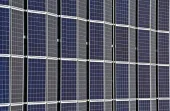

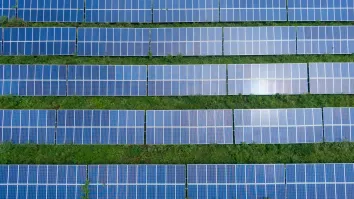
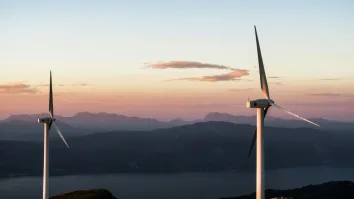

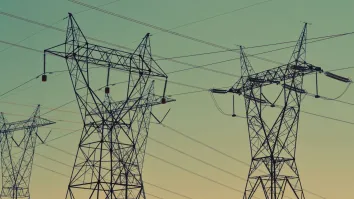




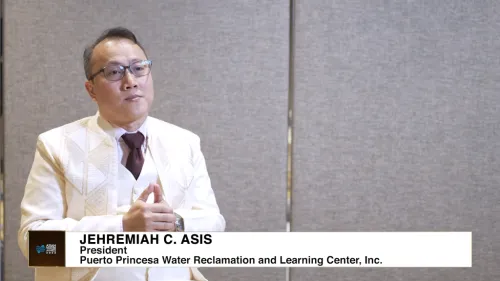


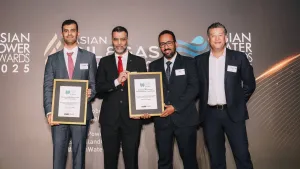





 Advertise
Advertise






